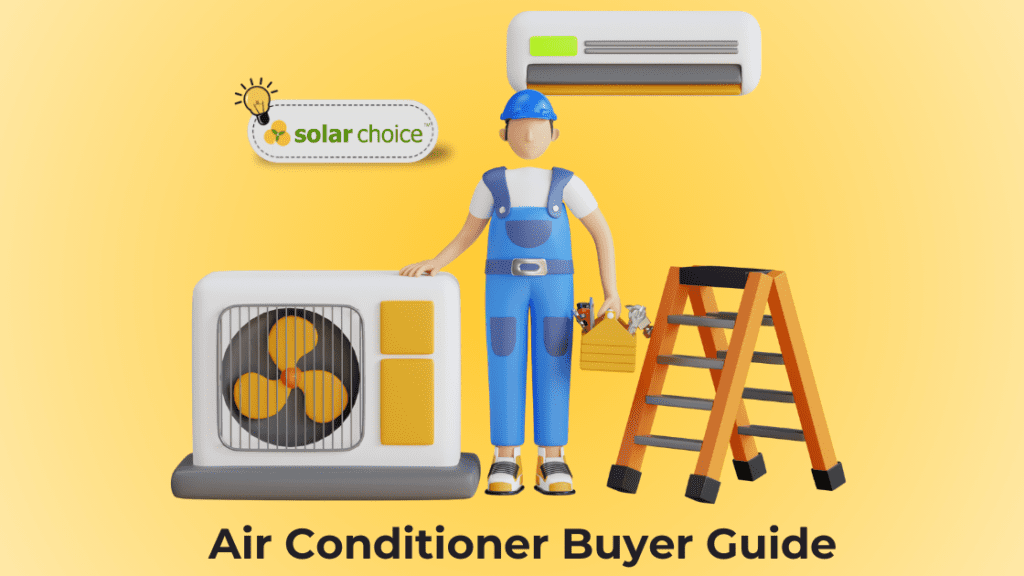In many climates of Australia air conditioning plays a crucial role in a household. For example ABS data shows that over 60% of NSW households use an air conditioning system for cooling and 27% of households use reverse-cycle air con for heating. This guide is designed to help prospective buyers understand the different options available and assist in making a well-informed decision.
Compare quotes from local, reputable Air Con installers
The Different Types of Air Conditioning Systems
There are 5 main types of air conditioning systems which we run through below.
Types of Air Conditioning Systems:
| Type | Description | Image Example |
| Split Systems | Split systems have an indoor unit which contains an evaporator and a fan and an outdoor unit which contains a compressor, condenser and a fan. Mainly used when homeowner is looking to air condition one room. |  |
| Multi Split Systems | Similar to a split system a multi split system will have an outdoor unit. This is unit is able to service 2 or more indoor units enabling the homeowner to add air conditioning to multiple rooms. | 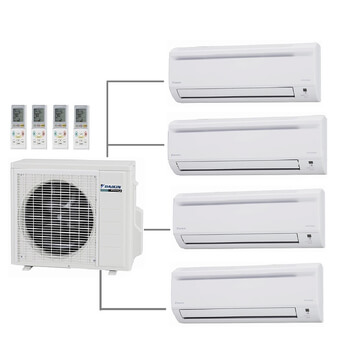 |
| Ducted Systems | A ducted system will have a centralised unit that distributed cool air via cylindrical tubes to vents in the roof or wall of different rooms. | 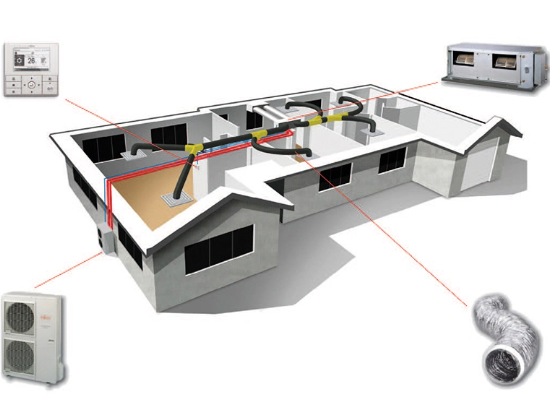 |
| Portable Systems | Portable air conditioners simply plug into a wall socket and can be moved from room to room. Some units will include a flexible tube to expel hot air which can be pointed out a window or door | 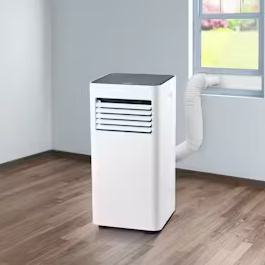 |
| Window/Wall Units | Window units look like a large box where half the unit will be outside and other half will be inside for example through a window. | 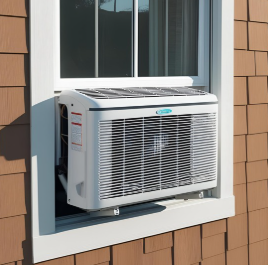 |
Pros and Cons of Types of Air Conditioning Systems
| Type | Pros | Cons |
| Split Systems | – Cost effective for smaller spaces – Easy to install – These units are energy efficient | – Not as effective in large open spaces – Indoor units can be noisy, typically around 45 dba – Aesthetically requires indoor unit which can be an eyesore |
| Multi Split Systems | – Enables the flexibility to have multiple rooms at different temperatures – Simpler to install than a ducted system | – Same cons as a split system |
| Ducted Systems | – Ducted systems don’t have indoor units and are much quieter than split systems – Aesthetically each connected room only needs a vent to be installed – In the long run it can be cheaper to run a ducted system | – More expensive in terms of the hardware and installations costs – Some ducted systems can require an entire house to be cooled, rather than selecting individual rooms – Higher maintenance costs as the ductwork is recommended to be cleaned every 2 to 3 years |
| Portable Systems | – Cost effective solution – No installation required – Can be moved from room to room, or taken at the end of lease – Can be stored away when not in use | – Less efficient, especially if hose note connected correctly – Limited cooling power – Takes up floor space – Quite noisy up to 70dba |
| Window/Wall Units | – Cost effective solution – Simple installation often without professional help – Can be moved from room to room, or taken at the end of lease – Can be energy efficient in small rooms | – Aesthetically unappealing – Noisier than other AC systems, typically around 50dba – Usually lack precise temperature control |
Reverse Cycle Air Conditioners
A reverse cycle air conditioner can both heat and cool a space by transferring heat instead of generating it.
The cooling only air conditioners are slightly cheaper as they require less components. However most manufacturers have focused on improving their reverse cycle models as this is by far the most popular unit. As a result all the most efficient units are reverse-cycle.
Even if you are only rarely going to use the heating component, you are better off focusing on the reverse cycle systems.
How do reverse cycle air conditioners work?
In cooling mode, it extracts heat from indoor air and releases it outside, leaving the room cooler. In heating mode, it absorbs heat from the outdoor air—even in cold weather—and brings it inside. This process is possible because of a refrigerant that circulates between the indoor and outdoor units, changing from liquid to gas and back again.
A compressor helps increase the refrigerant’s temperature for heating or cooling. Since it moves heat rather than creating it, a reverse cycle air conditioner is highly energy-efficient.
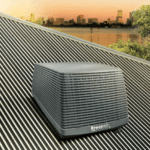
Evaporative Cooling Air Conditioners
An evaporative cooling system draws warm air through water-soaked pads, where the air cools as the water evaporates, then circulates the cooled air into the space. This process adds moisture to the air, making it most effective in hot, dry climates but less efficient in humid conditions.
In these circumstance an evaporative cooling air conditioner can be more efficient than a reverse cycle system providing a lower-cost solution in the long run.
| Ideal for Hot, Dry Climates | Less Effective in Tropical Areas |
| – Central & Western Australia – South Australia – Inland Victoria & NSW | – Eastern coastline of Australia – Brisbane, Sydney, Cairns & Darwin |
What Size Air Conditioner Do You Need?
We always recommend doing your own calculations on determining the right size air conditioner, as salesmen will have an incentive to sell you a larger system.
Selecting the appropriate air conditioner size is crucial for achieving optimal comfort and energy efficiency in your home. An undersized unit may struggle to cool the space, while an oversized one can lead to increased energy consumption and inconsistent temperatures. To determine the right AC size, consider the following factors:

1. Room Dimensions and Layout
Begin by measuring the length and width of the room to calculate its square footage. For rooms with open floor plans or spaces that aren’t separated by doors, combine the areas to determine the total space the AC needs to cool. Additionally, consider the ceiling height, as rooms with higher ceilings have a larger volume of air and may require a more powerful unit.
2. Climate Zone
Your local climate significantly impacts the cooling capacity required. Homes in warmer regions will need more powerful AC units compared to those in cooler areas. Some sizing guidelines provide adjustments based on climate zones to ensure adequate cooling.
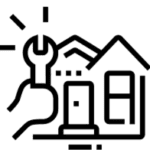
3. Insulation and Building Materials
The quality of your home’s insulation affects how well it retains cool air. Proper insulation in walls, ceilings, and floors helps maintain indoor temperatures, reducing the workload on your AC unit. Homes with poor insulation or large windows that allow significant sunlight may require units with higher cooling capacities.
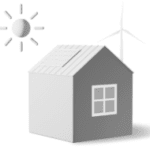
4. Sun Exposure
Rooms with large windows facing south or west can experience increased heat gain during the day, necessitating a more powerful AC unit. Conversely, shaded rooms or those with north-facing windows may remain cooler and require less cooling capacity.
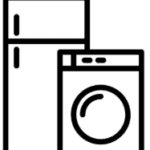
5. Occupancy and Appliance Heat
The number of occupants and the presence of heat-generating appliances can influence the cooling load. Each person can add approximately 600 BTUs of heat to a room. Kitchens or home offices with multiple electronics may also contribute additional heat, requiring a larger AC unit.
General Sizing Guidelines
While it’s essential to consider all the factors mentioned, the following table provides a general guideline for AC unit sizes based on room size
| Room Size | Common Use | Recommended Capacity (kW) | Suitable Type | Estimated Installed Cost |
| Up to 20m² | Bedroom or study | Up to 2.5kW | Split system, or portable/window unit | $500 to $4,000 |
| 20–40m² | Living spaces, kitchens or large bedroom | 2.5 to 5kW | Split system | $1,500 to $5,000 |
| 40–60m² | Open plan areas or extra large rooms | 4 to 6kW | Large split system | $2,500 to $6,000 |
| 60m²+ | Multiple connecting rooms | 5 to 9kW+ | Multi-split or ducted systems may be more efficient | $4,000 to $10,000 |
Compare quotes from local, reputable Air Con installers
Government rebates for air conditioning systems
There are no federal or Australia-wide incentives for air conditioning. However there are some Australia states that offer rebates for air conditioning systems. In most cases the rebate will be higher if the household is decommissioning an old inefficient system at the same time.
See below summary of state rebates for air conditioning systems:
| State Program | Who Is Eligible? | Approximate Amount Of Rebate |
| NSW Energy Savings Scheme | Any household in NSW installing new or replacing old Air Conditioning system | $300 to $800 depending on size of system and if replacing old one |
| ACT Home Energy Support Program | Holders of Government Pensioner Concession Card, Department of Veterans’ Affairs Gold Card, or an Australian Government Health Care Card | 50% of costs up to maximum of $2,500 |
| Victorian Energy Upgrades Heating and Cooling Discount | All Victorian households installing a Reverse Cycle Air Conditioning system | $70 to $3,000 depending if ducted system and if decommissioning old system |
| South Australia – Retailer Energy Productivity Scheme | Any household or business installing a reverse cycle or evaporative cooling air conditioning system | $200 to $1,500 depending on size and existing system |
Understanding Air Conditioning Energy Rating Labels
The energy rating labels are a great tool to help buyers compare some of the key performance characteristics like efficiency, power and noise between models in an apples-for-apples way. Under the GEMS Act 2012 it is mandatory for all air conditioning systems released after 1st April 2020 to have the below label. Earlier models may have a different label.

How To Read Each Section
- Cooling Capacity – This tells you the strength of the air conditioner’s cooling at an outdoor temperature of 35°C.
- Heating Capacity – This tells you the strength of the air conditioner’s heating capacity at two different temperatures – 7°C above and 2°C below.
- Brand and Model – This part of the label tells you the brand and model number that the rating has been completed for. Ensure you are comparing the right model that you have been quoted.
- Noise – This sections provides a sound rating in decibels of the indoor and outdoor unit. Remember that air conditioners typically have an outdoor unit and an indoor unit that would be installed. The outdoor noise may be less important if its not in an audible area of your property.
- Energy Efficiency – This is one of the key features of the label. Each unit has been tested in 3 different climate zones – refer to the map on the left to work out your zone. Effectively each unit is scored out of 10 for heating and cooling in each zone. The higher the number the more efficient the unit will be.
- Energy Usage – Using consistent assumption the label will estimate how much electricity (in kilowatt-hours) the air conditioner will use in a year. You can use these figures (multiplied by your electricity rate) to estimate the cost of running the air conditioner for a full year.
Tips For Getting An Air Conditioner Installed

Air Conditioner must be installed by an ARCtick approved technician. Additionally as an air conditioner will usually require a new RCBO at the switchboard and a new cable run to the install point, the technician should hold the relevant electrician qualification for your state as well.
An split or ducted air conditioning system will also require a qualified plumber to run the condensation pipe into a stormwater drain. Many installation companies will not hold all of these qualifications so we recommend you ask the supplier to provide evidence of the relevant qualifications prior to committing to a solution.
Even if installed safely, unqualified installations can affect your system’s warranty and ability to access a rebate.
Compare quotes from local, reputable Air Con installers
- Solar Panel Costs: Solar Choice Price Index | April 2025 - 1 April, 2025
- Solar Panels For Homes – All You Need to Know About Solar Systems - 18 March, 2025
- Best NSW Solar Feed-In Tariffs - 17 March, 2025
